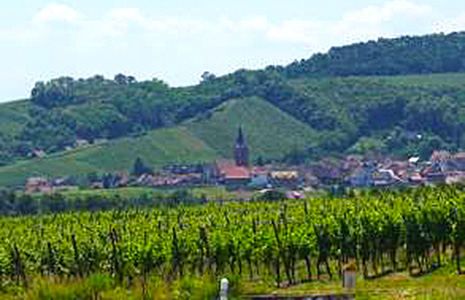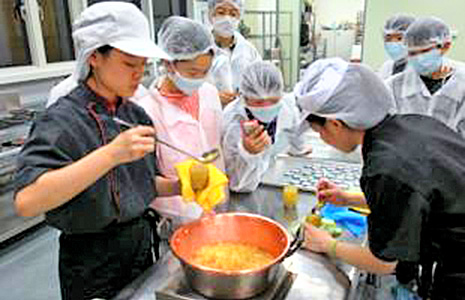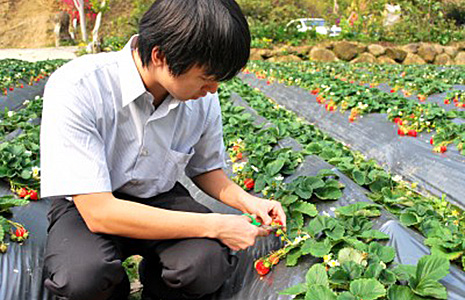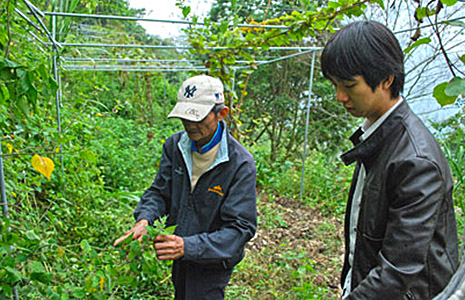 |
 |
 |
 |
 |
|||

1) The Committed Team At the end of 2007, a blog named “Red on Tree” appeared, the first article ran as follows: (http://blog.Red on Tree.com/?cat=7&paged=3): “I decided to start a business that brings happiness to myself and as well as others. It will be a business that contains dreams, passion, insistence and positive energy. It might be small, with only me and some people around me, but I believe a start-up with positive energy can be highly contagious as it appeals to people’s empathy and compassion. My own business cares about our land and local people, and it is named as [Red on Tree]”. This passage was written by Mr. Lin. He invested all his saving when he was a junior student at university and launched a new brand “Red on Tree”. Although this was a single-owner start-up, he was not alone. Rather, he had very luckily recruited a number of good friends to be his comrades. They all harbored a passion for local food materials; some of them even knew how to design and make good packaging. Upon mutual trust, several young people became team players and put in efforts to make a new brand of jam. At first, this team knew very little about jam making. They had to start from picking fruits, cooking fruits into jams, and bottling. Every step was new to them, and what they could ask for help was enthusiasm and a few cookbooks. Faced with several failures, they had to ask for professionals. They invited a dessert chef, who studied in France before, into the team and began to make good jams with his help. Since then on, their products started show good and consistent quality, and the team finally agreed that it was about time to commercialize their products. Then they put a lot of efforts on packaging and sterilization technology. With cooperative efforts, they slowly got on the right track.
They knew there was still room for improvement, and determined to go to Alsace, France to seek advice from Christine Ferber, the founder of a world-renowned jam brand. Aside from learning secrets of jam making, they also delightfully discovered the Alsace people have strong affection for their land. This made their determination even stronger to bring the spirit of local caring into their brand. In the summer of 2008, Red on Tree finally made its way into 248 Farmers Market, an experimental marketplace in the shopping district in Taipei.
2) Quality Betterment Red on Tree had put forth tremendous time and effort in finding the right fruits and farmers who don’t use pesticides or any other toxins. They spent lots of time garnering information and visiting farmers, making sure their farming was toxin-free, the fruits grown there are good and right for making processed fruit products. On the other hand, some farmers were so proud of their fruits that they refused to sell them for making processed products like jam. They had to work hard to gain trust form these farmers. During their trial phase, according to Mr. Lin, they had faced several failures. Take their head chef as example. Since watermelon was his favorite fruit, he wanted to make watermelon jams, which proved a failure because watermelons are too rich in moisture and sweetness. Another example was sugar apple. This fruit is seedy with mucous membrane; therefore it takes great pain to peel the membrane and pick seeds. Finally the sugar apple jam tasted sweet but lacked fragrance. They were very disappointed at this result. It is important to know that a kind of fruit has varieties and the best-tasting one might not necessarily be the right one for jam. The Red on Tree team made efforts in trying, and slowly grasped knacks for jams with various flavors. Apart from taste, there were other issues to tackle with when it came to developing products. Once Red on Tree tried to make loquat jam, which was a big success, yet there were problems: high cost and hard-to-peel skin. Finally they gave up on that idea. Longan was another good example. Its peel was so sleek that it is very hard to disengage it from the pulp. Even though the taste was marvelous, the unbalanced flavor and lengthy process still made the team decide not to commercialize it.
Red on Tree not only pays close attention on fruit varieties but insists on never using additives. They have tried hard to keep original flavors of fruits and cast off artificial additives, which lengthens the time and increasing the cost. The flavors on market have been multiplied, yet using no additives has been the sole principle. Red on Tree would send some of the jams back to farmers so they know how marvelous the jam tastes and appreciate the hard work by the team. They know their fruits are well used to make good-quality jams and preserves and would love to supply high quality fruit to Red on Tree. Therefore Red on Tree began to stress “origin place” and won recognition from the consumers. |
||||||||||||||||||||||||||
|



